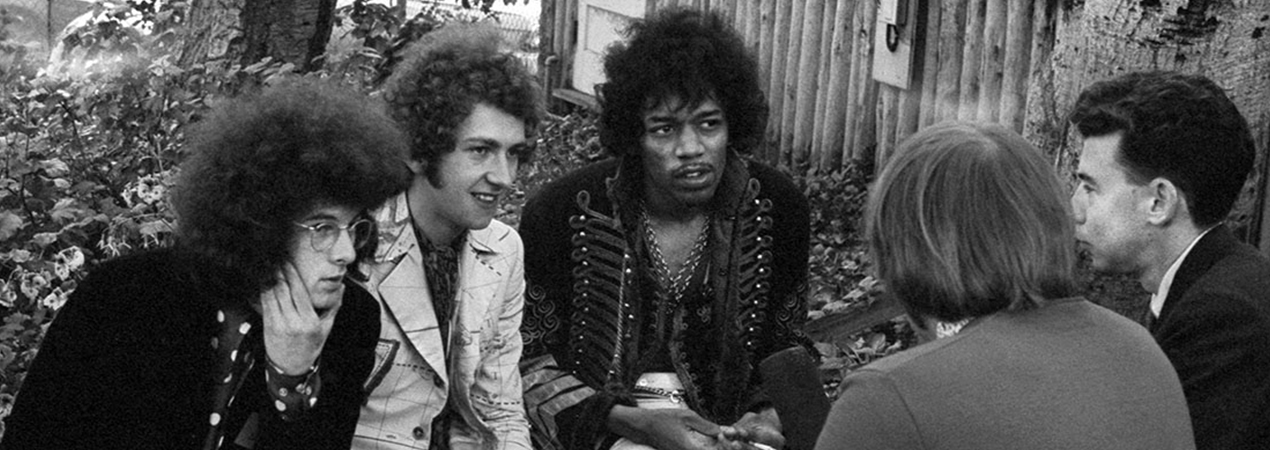The idea was simple: to create and curate a festival featuring known and new musicians that would represent different genres from different countries, with most of the money going to charity. The idea quickly tornadoed into a three-day festival that would set the bar for all future festivals and dominate the cultural zeitgeist at the end of the 1960s.
![]()
A “Board of Governors” that included notables such as John Phillips, influential lead singer of The Mamas & The Papas, Andrew Loog Oldham, legendary manager of The Rolling Stones, Mick Jagger, who wouldn’t be allowed to perform due to visa restrictions, and Paul McCartney quickly mapped out which acts would perform. It was McCartney who suggested two new acts be invited to the festival – two new bands that were causing waves across the Atlantic and taking London by storm: The Who and The Jimi Hendrix Experience.
For anyone lucky enough to be there, the last day of the three day festival promised to be an experience they would remember for a lifetime. That night, acts such as Big Brother and the Holding Company and Buffalo Springfield would perform. The Mamas & The Papas featuring Scott McKenzie, whose song “San Francisco (Be Sure to Wear Flowers in Your Hair)” became the unofficial anthem for the hippie generation, closed the show. But before the flowers could be placed in anyone’s hair, the two acts recommended by McCartney would take the stage. A simple coin toss backstage reportedly decided on the running order, with the coin flipping in the Hendrix direction. The Who would appear first, allowing Hendrix to watch and then take it one step further. The Who did not disappoint. After “My Generation”, Pete Townshend smashed his guitar while smoke bombs exploded and Keith Moon kicked over his drum kit. A notorious performance, and one that would announce The Who as one of the most important and iconic musical acts onstage. The band continues to tour and smash guitars even today.
Once the smoke cleared, The Grateful Dead – without introduction – played a few songs. Of The Dead’s performance at the Monterey International Pop Festival in 1967, Jerry Garica would remember “[The Who] smashing all their equipment. I mean, they did it so well. It looked so great. It was like, wow, that is beautiful. We went on. We played our little music. And it seemed so lame to me at the time.” After the Dead, it was Rolling Stone’s guitarist Brian Jones who took center stage and approached the mike to introduce the next act. Jones, who took a break from the recording studio in England, flew to California specifically to introduce Jimi Hendrix to the crowd. Dressed outlandishly in a golden Tudor-style cape, he wandered around arm-in-arm with Andy Warhol superstar, singer, and equally blonde Nico. Visually, they were a dynamic coupe. As Jones took the stage, the audience roared. “The most exciting guitarist I’ve ever heard, Jimi Hendrix, the Jimi Hendrix Experience.”
As the band took their places, Ed Caraeff readied his camera.
![]()
Caraeff found his way to Monterey with help from his friend Rodney Bingenheimer. Binghenheimer was no stranger to the goings on in California and in a short amount of time, the diminutive hipster became one of the most prominent people on the scene. Caraeff, then only a 17-year-old high school student with a love of photography, was just starting to shoot, develop, and look for places to print – and hopefully pay for – his rock and roll photography. As Hendrix took the stage, Caraeff knew he didn’t have much film left and took a few shots before waiting for the finale. “I was standing in the press/photographers area in front of the stage. There was a German photographer who flew over to photograph the show. He told me ‘save some film for this Jimi Hendrix cat.’ In order to get a better angle, I grabbed a lone folding chair in the press area and used that to stand on, right against the elevated stage.” Hendrix didn’t disappoint. As the set came to an end, and the final strands of “Wild Thing” echoed around the festival, Hendrix laid his guitar on the ground and re-enacted a scene he had tested out in a small club in London a few months prior. With lighter fluid in hand, Hendrix knelt in front of his guitar and, as if calling upon the rock gods of the past and the future, he doused it, and set it ablaze. “I was so close to him,” remembers Caraeff. “I could feel the heat from the flames. I was waiting for this moment to come and I had just enough shots on the roll to capture what I was seeing; what the world was about to see.” But that’s wasn’t all Hendrix had to offer. As the fire blazed, he jumped up and smashed the burning guitar on stage. Then he tossed the broken charred bits out to the audience. That single performance announced to the world that there was a new rock god in town and his name was Jimi Hendrix.
Ed Caraeff’s iconic photography is available as limited edition, fine art prints in the following sizes :
12×16 / 16×20 / 20×24 / 20×30 / 24×34 / 30×40 / 40×60 / 48×72
Each print is digitally signed and numbered, and accompanied with a certificate of authenticity signed by Ed Caraeff.
To enquire contact jackie@iconicimages.net or visit out Fine Art Prints page.
Ed Caraeff also has two new publications available ‘Burning Desire: The Jimi Hendrix Experience through the Lens of Ed Caraeff’ and ‘Iggy & the Stooges: One Night at the Whisky 1970’ available from the Iconic Store.
